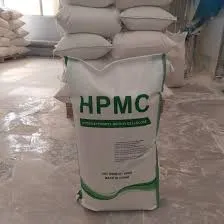
Nov . 10, 2024 15:31 Back to list
Exploring the Relationship Between HPMC Grades and Their Viscosity Properties in Formulations
Understanding HPMC Grades and Their Impact on Viscosity
Hydroxypropyl Methylcellulose (HPMC) is a versatile and widely used cellulose ether derived from natural cellulose. Its unique properties make it an essential ingredient in various industries, particularly in pharmaceuticals, food production, and construction. Among the many characteristics of HPMC, viscosity plays a crucial role in determining its functionality across different applications. This article will delve into the various grades of HPMC and how they influence viscosity.
What is HPMC?
HPMC is synthesized through the reaction of cellulose with propylene oxide and methyl chloride, resulting in a compound that combines hydroxypropyl and methoxy groups. This modification enhances the solubility and usability of cellulose in water and organic solvents. The degree of substitution—that is, the number of hydroxyl groups replaced by hydroxypropyl and methoxy groups—determines the properties, including viscosity, of different HPMC grades.
The Significance of Viscosity
Viscosity is a measure of a fluid's resistance to flow; in the case of HPMC, it describes the thickness or consistency of a solution. The viscosity of HPMC solutions is critical in applications as it affects the performance, stability, and texture of products. Different industries require specific viscosity levels to ensure optimal functionality, making an understanding of HPMC grades essential.
Variability in HPMC Grades
HPMC is available in various grades, categorized primarily by their viscosity, degree of substitution, and the molecular weight of the polymer. Each grade of HPMC is designed for specific functions and applications
1. Low Viscosity Grades These grades are characterized by their low viscosity levels and are commonly used in products where a light gel or thin coating is preferred. They can be found in liquid detergents, paints, and personal care products. Low viscosity HPMC grades enable easy application and quick drying.
2. Medium Viscosity Grades These grades provide a balance between thickness and fluidity, making them suitable for applications requiring moderate viscosity. They find applications in pharmaceuticals for controlled drug release, where an optimal flow rate is crucial. Additionally, medium viscosity HPMC grades are often used in food thickeners and stabilizers.
hpmc grades viscosity

3. High Viscosity Grades High viscosity HPMC grades create thick, gel-like solutions ideal for applications that demand stability and consistency. These are often used in construction materials such as tile adhesives and wall putty, where strong adhesion and workability are vital. Furthermore, in the food industry, high viscosity HPMC can be utilized as an emulsifier and stabilizer in sauces and dressings.
Factors Affecting Viscosity
The viscosity of HPMC solutions is influenced by several factors
- Concentration Higher concentrations of HPMC result in increased viscosity. This principle is particularly important in formulations where a thicker consistency is desired.
- Temperature Viscosity is temperature-dependent. Generally, as temperature rises, viscosity decreases, leading to more fluid solutions. This property can be utilized in industrial processes requiring varying viscosity levels at different stages.
- pH Levels The pH of the solution can also affect viscosity. HPMC is relatively stable across a range of pH levels, but extreme pH conditions may alter its viscosity characteristics.
- Molecular Weight The molecular weight of the HPMC grade directly correlates with its viscosity. Higher molecular weight grades are typically associated with increased viscosity.
Conclusion
Understanding the different grades of Hydroxypropyl Methylcellulose and their corresponding viscosities is essential for formulators and manufacturers across various sectors. By selecting the appropriate HPMC grade based on viscosity requirements, industries can enhance product performance and ensure quality. Whether in pharmaceuticals, food, or construction, HPMC continues to be an invaluable component due to its versatile viscosity properties. As industries evolve and innovate, the significance of HPMC in developing efficient and effective products will undoubtedly remain prominent.
-
Versatile Hpmc Uses in Different Industries
NewsJun.19,2025
-
Redispersible Powder's Role in Enhancing Durability of Construction Products
NewsJun.19,2025
-
Hydroxyethyl Cellulose Applications Driving Green Industrial Processes
NewsJun.19,2025
-
Exploring Different Redispersible Polymer Powder
NewsJun.19,2025
-
Choosing the Right Mortar Bonding Agent
NewsJun.19,2025
-
Applications and Significance of China Hpmc in Modern Industries
NewsJun.19,2025







